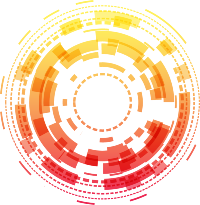In recent years, social media companies have increasingly integrated artificial intelligence to enhance user experience, often blurring the lines between reality and fantasy. Snapchat’s introduction of the “Imagine” Lens exemplifies this trend, positioning itself as a tool for limitless creative expression. This feature allows users to generate and modify images through descriptive prompts, opening a new frontier in how we curate and share visual content. While on the surface it appears as an exciting innovation, a deeper analysis reveals both compelling possibilities and significant concerns about the future of digital identity and social connection.
Reimagining Self-Representation: The Limitations and Opportunities
The core appeal of Snapchat’s Imagine Lens lies in its capacity to transform ordinary selfies into extraordinary scenes—becoming astronauts, cowboys, or mythic characters—by simply typing in a description. This capability taps into a desire for novelty and escapism, providing users a playful egg for experimentation. Unlike 기존의 Snap photos, which capture moments rooted in reality, this AI-driven tool ventures into a realm of re-imagination—a kind of digital cosplay, where identity becomes fluid and malleable.
Yet, this shift raises fundamental questions about authenticity. Are these images mere fantasies, and does their creation diminish the sincerity of digital expressions? If social media has traditionally thrived on sharing genuine feelings, real experiences, and organic moments, does the proliferation of AI-generated visuals dilute this authenticity? While it broadens options for expression, it could also erode trust, as users might increasingly struggle to differentiate between real and fabricated visuals. The social significance of sharing becomes clouded when images can be so easily manipulated and personalized beyond reality.
The Contradictions of Social Connectivity in a Virtual Age
At its core, Snapchat champions a persona of direct, intimate communication—messaging friends, sharing fleeting moments, and connecting in real time. The introduction of AI-generated images seems to conflict with this ethos, leaning instead toward individual entertainment and self-stylization. If the primary purpose of the platform is social dialogue, how much value does self-generated fantasy add? Perhaps it is a form of entertainment or a way to spark conversations, but it risks prioritizing spectacle over genuine interaction.
Nevertheless, there are social dimensions that can benefit from AI creativity. For instance, trying out different hairstyles or Halloween costumes virtually can serve as a playful way to engage with friends or plan real-world events. In this context, AI becomes a means of social experimentation—testing ideas without physical commitment, which could foster shared experiences in novel ways. However, it’s essential to recognize that these tools are primarily aesthetic or performative rather than substantive.
The Future of AI and the Ethical Dilemmas of Digital Self-Expression
A critical, often overlooked aspect is the ethical dimension of AI-generated content. As platforms like Snapchat embed these technologies into their core offerings, they implicitly shape user perceptions of reality and identity. When users rely on AI to craft idealized images, they might develop distorted self-perceptions or foster unrealistic standards of beauty and success.
Moreover, accessibility remains a concern. Currently limited to subscribers of premium tiers like Lens+ and Snapchat+ Platinum, the exclusivity of such powerful tools may deepen social divides. Those with access can experiment endlessly, while others remain constrained. This disparity could lead to a fragmented cultural landscape where digital self-representation becomes a status symbol.
There’s also the danger of normalization—when AI-generated images become ubiquitous, they could influence societal standards of attractiveness and normalcy. Such shifts might exert pressure on users to conform to digitally constructed ideals, fueling insecurities and unrealistic expectations. The temptation to curate a perfect digital persona using AI tools must be tempered with awareness of these broader implications.
Snapchat’s “Imagine” Lens exemplifies a new era where creativity and technology intersect in unprecedented ways. While it offers exciting opportunities for self-expression and social interaction, it also warrants a cautious approach. Embracing AI’s potential responsibly requires users and creators to remain vigilant about authenticity, ethics, and social impact. As much as these tools can stretch the boundaries of imagination, they should not compromise the core values of genuine human connection. The challenge lies in harnessing AI to complement, rather than replace, meaningful interaction—creating a future where technology elevates our shared human experience instead of distorting it.

